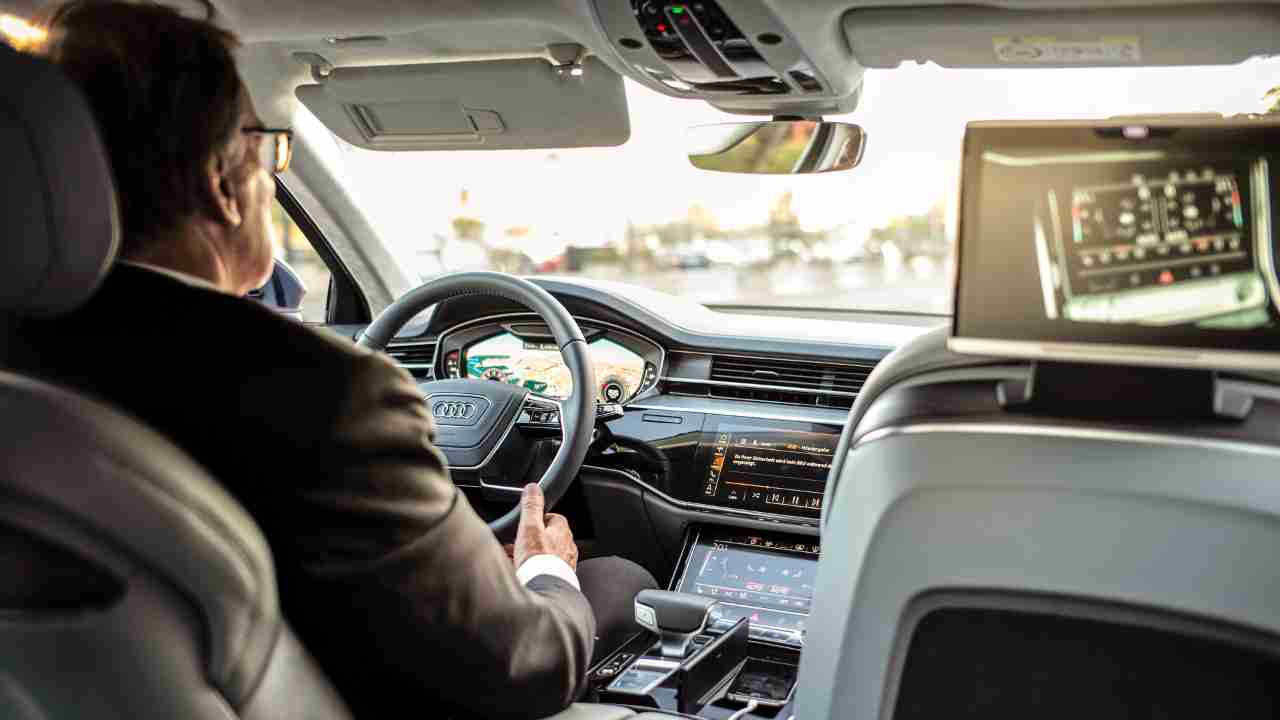We’re living in an era when cars come with more new tech than ever before. You might see TV ads that show it. Some new features might appeal, and maybe you’ll get a brand-new car just because you want something you saw advertised.
Let’s discuss some of the latest car technology and whether it helps or hinders you as a driver.
Blind Spot Alert Systems
Lane changes cause about 10% of car accidents. When these wrecks happen, it’s often through driver carelessness. A driver might not always check their blind spot before merging or abruptly changing lanes.
Blind spot alert systems supposedly alleviate this. Most drivers seem to like them. The driver or passenger’s side mirror lights up, indicating a vehicle or some other large object close by. Other systems sound a tone the driver hears. Some setups feature both a light and noise simultaneously.
This safety feature doesn’t have many drawbacks. Some drivers might have an issue with the light or noise just after they buy the car. However, they usually adjust pretty quickly. They soon know the light and noise mean another car nearby, and they no longer jump when these incidents occur.
Rear Backup Cameras
Rear backup cameras have been around for over a decade. In recent years, though, regulations stipulate that cars must have them. In other words, they’re no longer optional. They work so well that this mandate happened.
Most drivers like backup cameras pretty well. They can look at the touchscreen on the dashboard and see what’s behind them in real-time. The car will sound an alert if something moves across the car’s path unexpectedly, like a dog, child, or cyclist.
There’s one drawback with rear backup cameras that some drivers mention. The noise the car makes when it backs up isn’t exactly pleasant. You can expect an insistent beeping noise. It becomes louder if your vehicle approaches another car or some other object.
If you’re in a parking lot in very close quarters, and you’re getting out through careful maneuvering, the beeping sound the car makes might distract you. You can look at the camera and see you’re approaching another vehicle or inanimate object. Having a loud beeping noise at that moment might not seem ideal.
Parking Assistance
Some cars now have parking assistance. This feature lets you turn over control so your vehicle can park itself. If you don’t like parallel parking very much, you might love this feature. You no longer must go through the process where you try squeezing into a tiny space that can barely accommodate your car. Instead, you let the vehicle do it by itself.
Not every car has this feature yet. It’s most high-end, more expensive cars that offer it. You might imagine that at some point soon, more cars will have this feature, though. Since it’s so popular, it should continue catching on, even with less expensive vehicles.
In time, many driving classes might not require students to learn how to parallel park. If your car can do it for you, then learning this skill has no purpose. For drivers who hate parallel parking, this comes as welcome news.
Interactive Touchscreens
Virtually every modern car has a touchscreen. You can use it for many things. You can enter an address and activate the navigation system. You can use the screen rather than printed directions or a map, like in the old days.
You can also locate the nearest gas station, restaurant, or hotel. More expensive cars have additional touchscreen features. You can get one that shows you the album cover when you have music on. You can also see your miles per hour and which direction you’re driving.
Interactive touchscreens have their dangers, though. Before you start driving, most touchscreens demand that you acknowledge these dangers. You must agree you won’t have any screen interactions while you’re driving since these might distract you.
This has an ironic element. Public service announcements say you shouldn’t text and drive because it’s dangerous. However, there’s a large touchscreen on the dashboard with which you can interact.
Drivers must realize that they can utilize the touchscreen while driving, but when they do, they must exercise caution. If they pull over and park the car before touching the screen, that’s safer, but not many drivers do it. Modern car touchscreens certainly have their uses, but they’re also potentially deadly if they distract you while you’re driving.
Self-Driving Cars
Self-driving cars haven’t hit the market yet, at least not for widespread consumerism. However, several companies have tested them in traffic conditions, and this should continue as this century progresses.
Some drivers can’t wait till they have self-driving cars. They probably envision themselves sitting in their car while it takes them to work, and they’ll play Candy Crush on their phones the whole time. Others might just sit and look out the window while their car weaves seamlessly through traffic.
Is this a realistic look at the future? It’s hard to say. Just as many people fear self-driving cars as eagerly anticipate them. Some people feel like trusting your life to such a vehicle isn’t the smartest idea. What if the technology malfunctions when you’re on the highway, and you fly off the road at high speeds? What if the car doesn’t stop at a crosswalk and hits a couple of kids?
Frankly, we probably can’t tell about self-driving car efficacy for some years to come. Companies will continue testing them, and they may reach a point where they feel the tech has progressed, so they can let the general public have it without any major fears or concerns. We’re not quite there yet, but that day probably isn’t far. In some ways, the self-driving car represents the biggest and most significant step forward since the automobile’s invention.
When you do your car shopping, look at what features each vehicle has. Think about what you prioritize and what you don’t as much.






